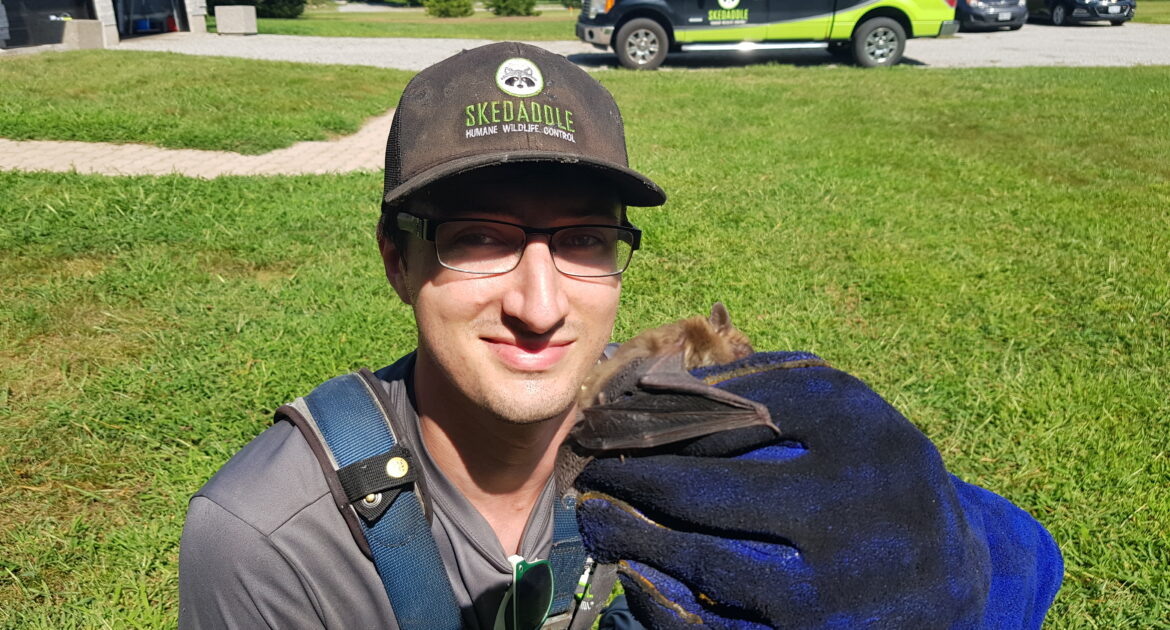While a few Canadian bat species are migratory, meaning that they fly south to spend winter where it is warm, most spend the winter hibernating. In the spring, hibernation comes to an end. Here are answers to questions you may have about what bats are doing in the spring after hibernation and how their activities may affect you.
1. When Do Bats Come Out in Spring?
Most Canadian bat species eat flying insects, so when the bugs come out again, you know that the bats aren’t far behind. Other than that, there’s no way to pinpoint the exact date and time that bats will wake up from hibernation. It’s rising air temperature that signals them to wake up, not a circadian rhythm of some sort that counts down to the end of winter.
2. What Do Bats Do When They Wake Up?
One of the first things that bats do when they emerge from hibernation is to start looking for food. There are two reasons why this is important. First, the bats have spent all winter living off their fat stores. Their metabolism slows down dramatically during hibernation so that they don’t use as much energy as usual, but still, by the time winter is over, their fat stores are depleted, and they have to build them back up.
The other reason why bats, at least female bats, have to start eating right away after hibernation is that they are now pregnant. Bats mate in the fall, but fertilization doesn’t happen right away. Instead, the female bat’s body stores sperm during the winter months. When spring comes, delayed fertilization takes place as the female’s body allows the egg to join with sperm. A bat’s gestation period is between 1-1/2 to two months, and delayed fertilization means that the babies are born when the mothers are awake and food is plentiful.
Another task that female bats have to complete in the spring is to find a new roost. The roost where a bat spends the winter is called a hibernaculum, but hibernacula are not always suitable for raising bat babies. Female bats gather together in maternity roosts to make the most of their shared body heat, but for the babies to survive, the roost itself has to maintain an optimal humidity level and temperature range. Once bats have found a good maternity roost, they keep coming back to it year after year.
3. How Might Bats’ Activities Affect You?
In the wild, bats may establish maternity roosts in caves or trees, but conditions in your attic may fall into just the right temperature and humidity ranges to make an ideal roost. In fact, some species of bats specifically seek out buildings for their roosts. Bats can fit through very small holes, so every spring, you should inspect your attic for bats and then your roof for openings that might let them in. These need to be sealed off before bats have the chance to roost inside.
Bats’ feces can spread parasites and pathogens. If these build up for a long time, they could become aerosolized and get into your home’s HVAC system. If you breathe them in, they can make you sick.
Bats in your attic are more likely to make their way into your living space, a stressful situation for both you and the bat. Confused and disoriented, a bat may feel threatened and bite in self-defence, especially if you attempt to handle it. Bats are known carriers of rabies, a virus that spreads through animal bites and is almost always fatal. Fortunately, rabies is slow to develop and preventable if you receive vaccination shots following a probable exposure.
4. What Do You Do About Bats in Your Home?
There are laws in place making it illegal to harm bats or to try to remove them when they are most vulnerable. Contact professional bat removal services in Coquitlam to ensure compliance.




